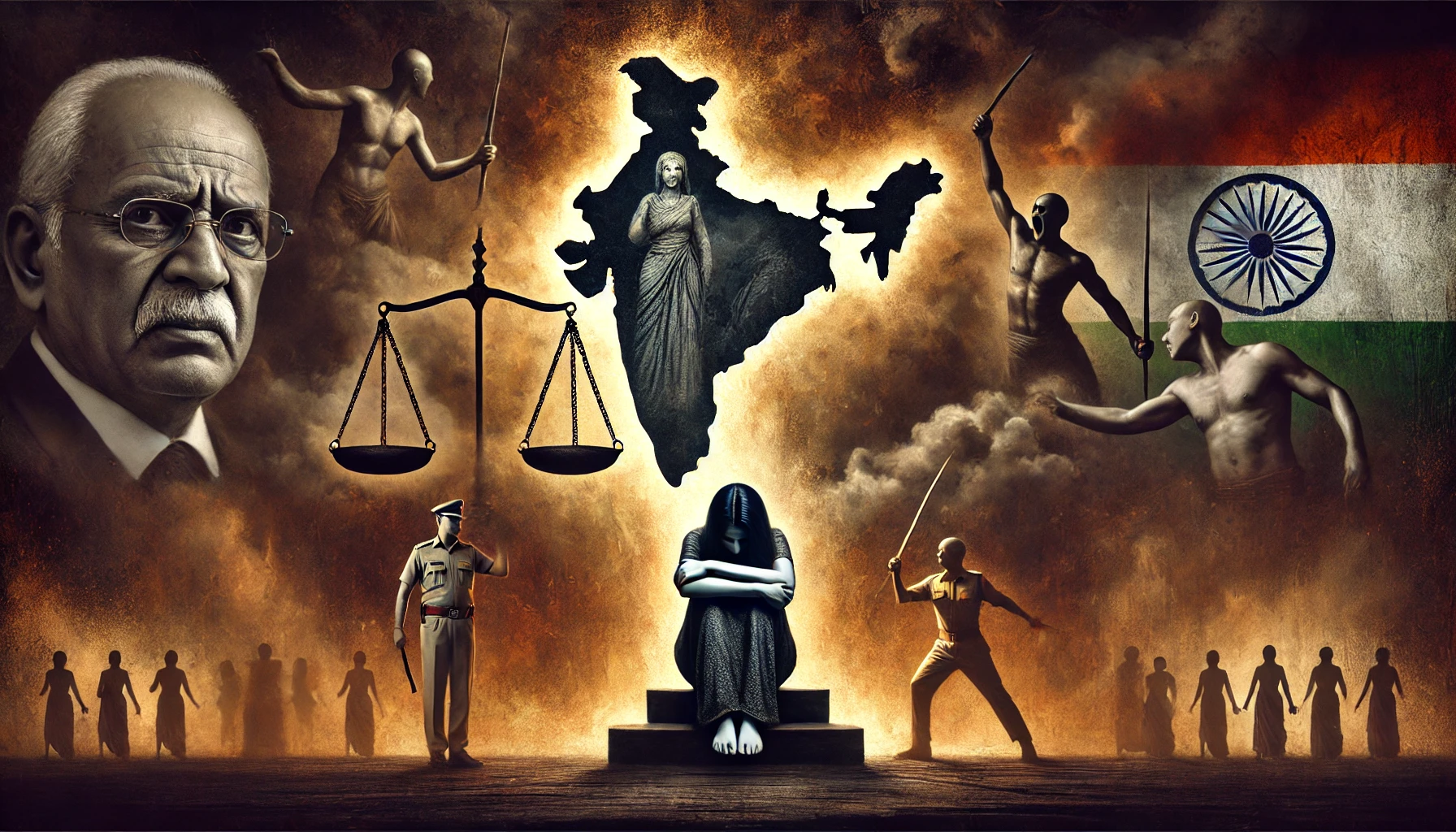Despite 78 years of independence, the safety of women in India remains a pressing issue, revealing deep-rooted societal challenges that hinder true freedom for half of the nation’s population. While India has made remarkable strides in various fields, the safety and security of women continue to be compromised due to persistent social, cultural, and legal challenges.
1. The Prevalence of Gender-Based Violence
One of the most alarming indicators of compromised safety is the high incidence of gender-based violence. According to the National Crime Records Bureau (NCRB), crimes against women, including domestic violence, sexual assault, dowry-related violence, and human trafficking, remain prevalent. Despite numerous laws and amendments aimed at protecting women, such as the Protection of Women from Domestic Violence Act (2005) and the Criminal Law (Amendment) Act (2013) post the Nirbhaya case, enforcement remains inconsistent, and the legal process is often prolonged and biased.
A recent and tragic example that highlights the ongoing crisis is the incident that occurred on August 9, 2024, at RG Kar Hospital in Kolkata. A young lady doctor was brutally raped and murdered by culprits who remain at large. The incident has shocked the nation, not only due to the brutality of the crime but also because, as of now, the police have been unable to apprehend the perpetrators. Reports suggest that there might be external pressures or influences hampering the investigation, raising serious concerns about the effectiveness of law enforcement and the influence of governance on justice delivery.
2. Cultural Norms and Patriarchy
Deep-seated patriarchal norms and cultural practices continue to perpetuate the subordination of women. In many parts of India, women are still expected to conform to traditional gender roles, which often places them in vulnerable positions. Practices like child marriage, honor killings, and dowry demands are manifestations of these regressive norms. The social stigma attached to reporting crimes like sexual assault further deters women from seeking justice, contributing to the underreporting of such cases.
3. Inadequate Legal and Institutional Support
While India has a robust legal framework designed to protect women, its implementation is often lacking. Police insensitivity, corruption, and a lack of gender-sensitive training within the law enforcement agencies contribute to the compromised safety of women. Victims of violence often face secondary victimization when dealing with authorities, discouraging them from reporting incidents.
The delay in capturing the criminals in high-profile cases like the one at RG Kar Hospital, despite the gravity of the crime, raises questions about the competence and commitment of the law enforcement agencies involved. The possibility of political or other external pressures interfering with the investigation only adds to the frustration and fear that justice may not be served.
4. Urban and Rural Divide
The safety of women is further compromised by the stark divide between urban and rural areas. In rural regions, access to education, legal resources, and support services for women is often limited. The lack of infrastructure, such as street lighting, public transportation, and safe spaces, contributes to the vulnerability of women in both urban and rural settings. Additionally, in rural areas, traditional power structures often dictate the fate of women, leaving them with little recourse against violence and discrimination.
5. Workplace Harassment and Discrimination
Even as more women enter the workforce, issues like workplace harassment and gender discrimination persist. The #MeToo movement in India brought to light the widespread nature of sexual harassment in various industries. However, many women still face significant barriers in reporting harassment due to fear of retaliation, job loss, and societal judgment. Despite the Sexual Harassment of Women at Workplace (Prevention, Prohibition, and Redressal) Act of 2013, many workplaces lack effective internal committees to address these complaints, and women in informal sectors often have no recourse at all.
6. The Role of Education and Awareness
Education is a powerful tool in combating gender-based violence and ensuring the safety of women. However, access to quality education remains uneven, with girls in rural areas and lower socio-economic groups being particularly disadvantaged. Moreover, the education system often fails to address gender sensitization adequately, leaving both boys and girls without the critical awareness needed to challenge gender stereotypes and violence.
Public awareness campaigns and media can play a significant role in changing societal attitudes, but their impact is often diluted by counter-narratives that reinforce traditional gender roles and the objectification of women. The portrayal of women in media, often reduced to stereotypes, further normalizes violence and discrimination.
7. Government Initiatives and Their Limitations
The Indian government has launched several initiatives aimed at improving the safety and security of women. Schemes like Beti Bachao, Beti Padhao (Save the Daughter, Educate the Daughter), and the Nirbhaya Fund for women’s safety projects show a commitment to addressing these issues. However, the effectiveness of these initiatives is often undermined by poor implementation, inadequate funding, and a lack of coordination among various stakeholders.
8. The Impact of Technology
Technology has a dual impact on women’s safety. On one hand, digital tools like mobile apps and emergency helplines have empowered women to seek help in dangerous situations. On the other hand, the rise of cybercrime, including online harassment, cyberstalking, and revenge porn, has introduced new challenges. The anonymity of the internet and the slow pace of cyber law enforcement make it difficult to protect women in the digital space.
9. The Way Forward
Addressing the compromised safety of women in India requires a multi-faceted approach:
- Strengthening Legal Frameworks
- Changing Cultural Norms
- Empowering Women
- Enhancing Public Infrastructure
- Leveraging Technology Responsibly
10. Conclusion
While India celebrates its independence and the many achievements it has made since 1947, the compromised safety of women remains a stark reminder of the work that still needs to be done. The tragic incident at RG Kar Hospital serves as a grim illustration of the vulnerabilities that women continue to face, even in professional and urban environments. True independence for women in India will only be realized when they can live free from fear, with their rights and dignity fully protected. This requires collective action from the government, society, and individuals to create an environment where women can thrive without the constant threat of violence and discrimination.



